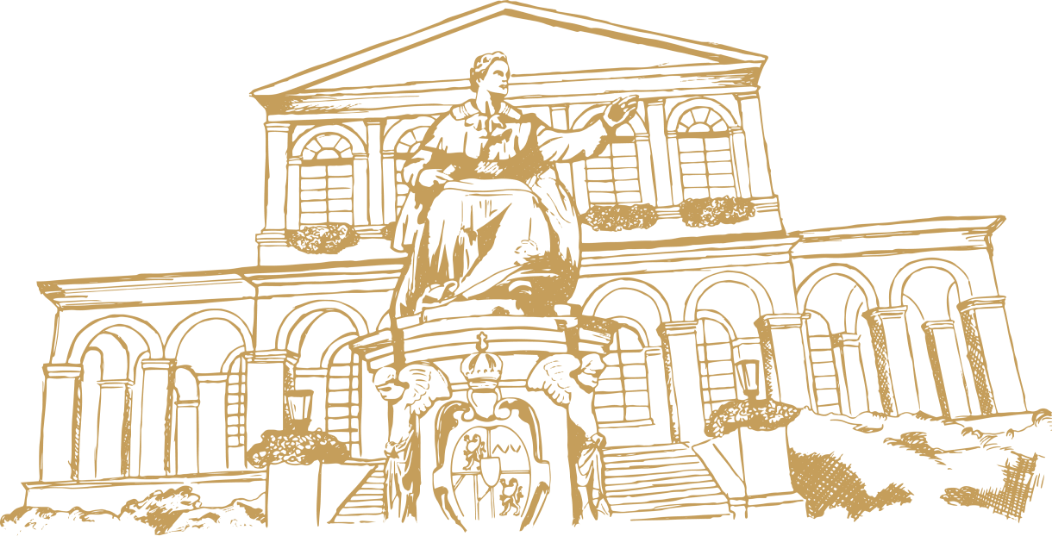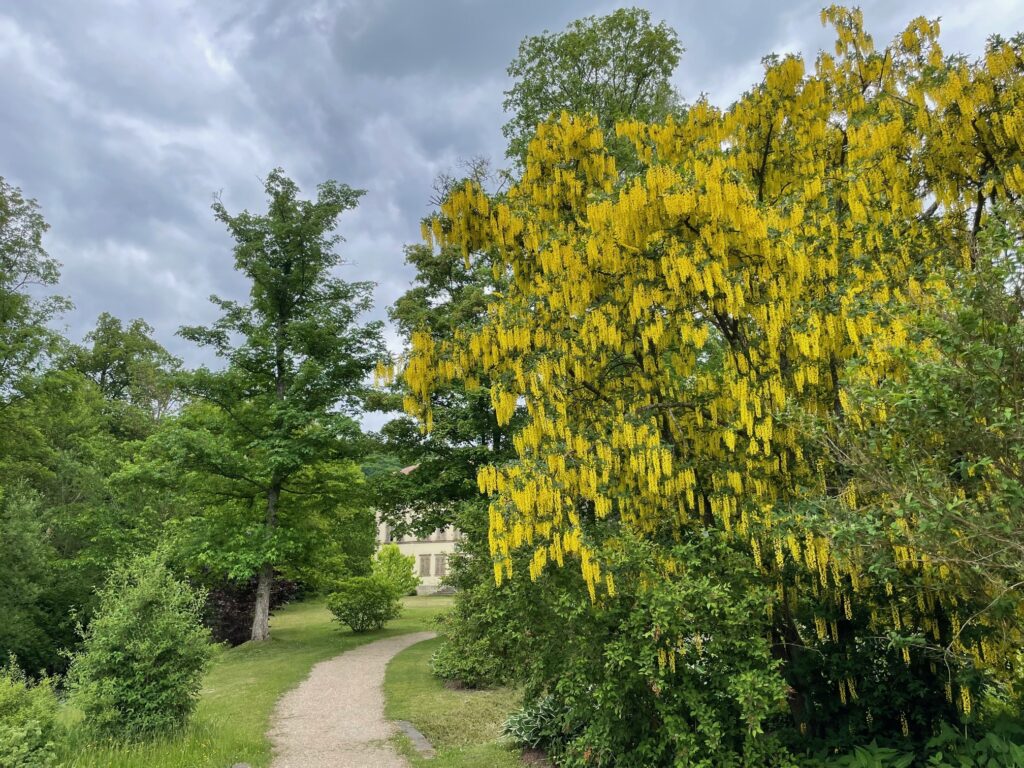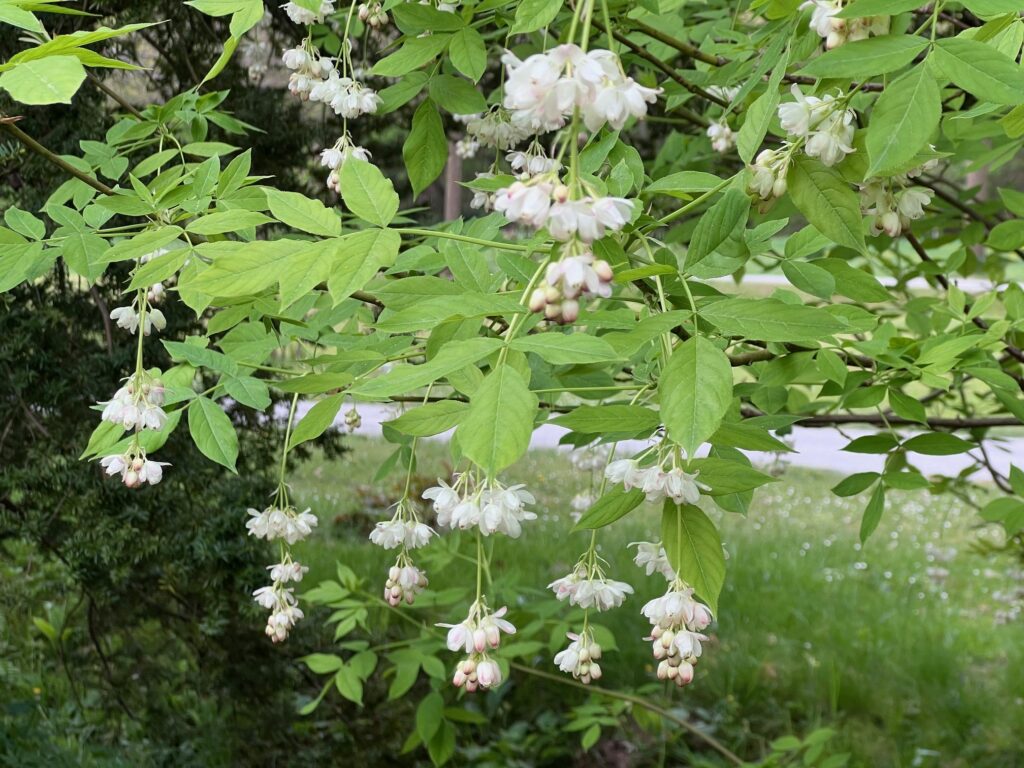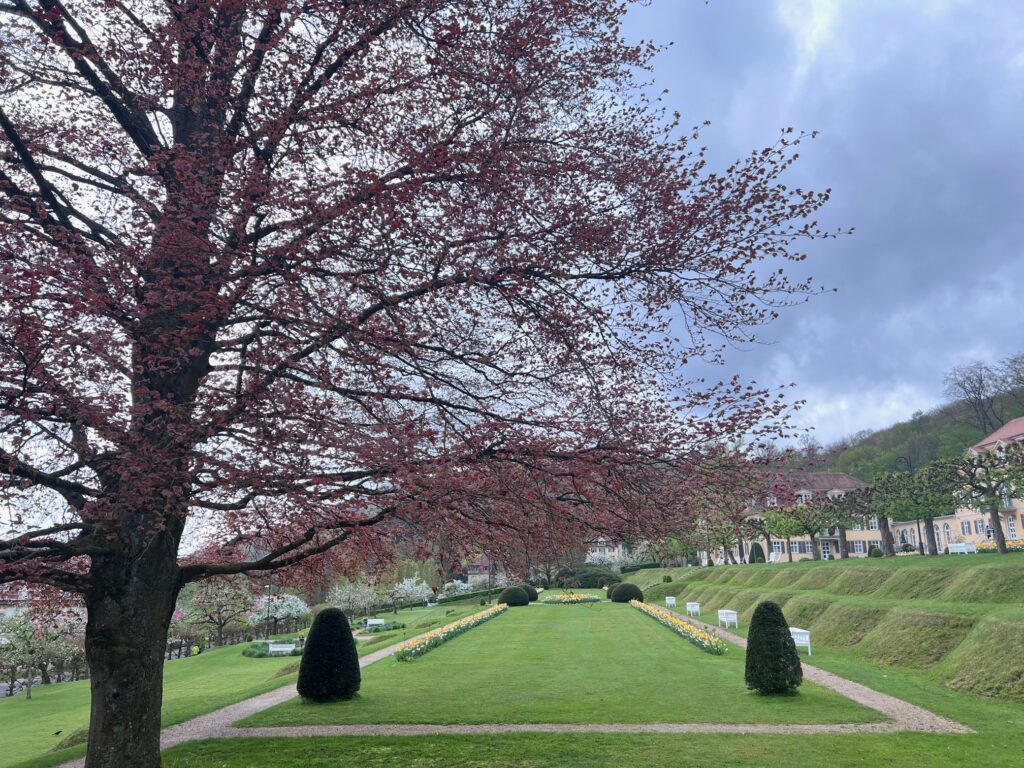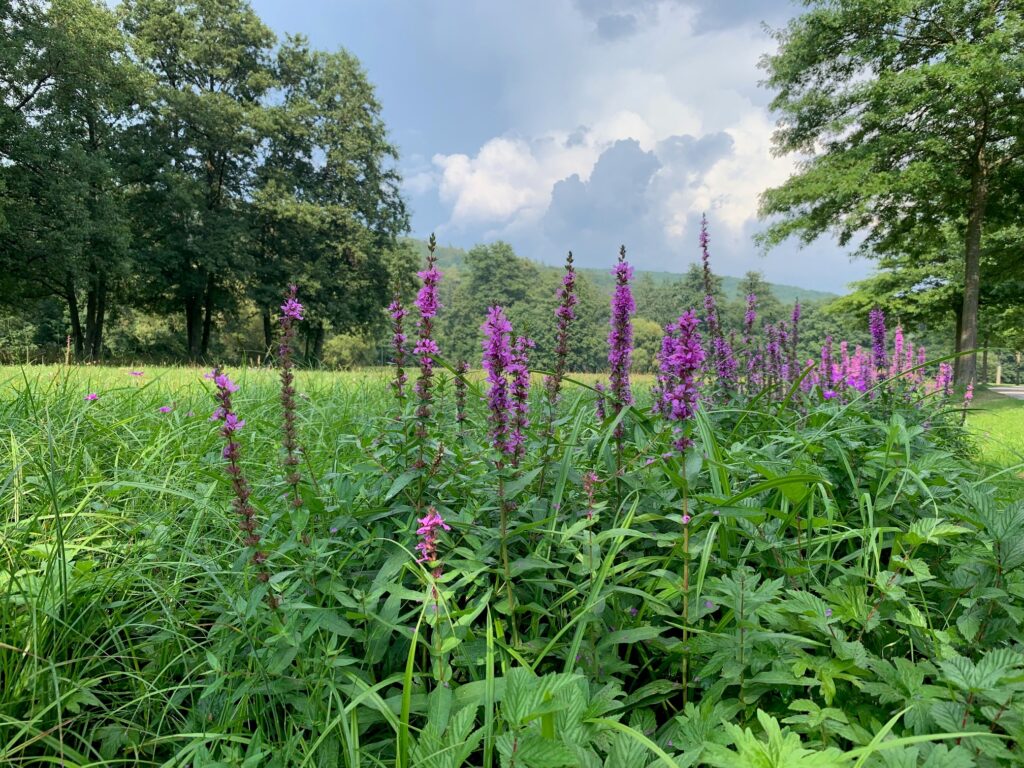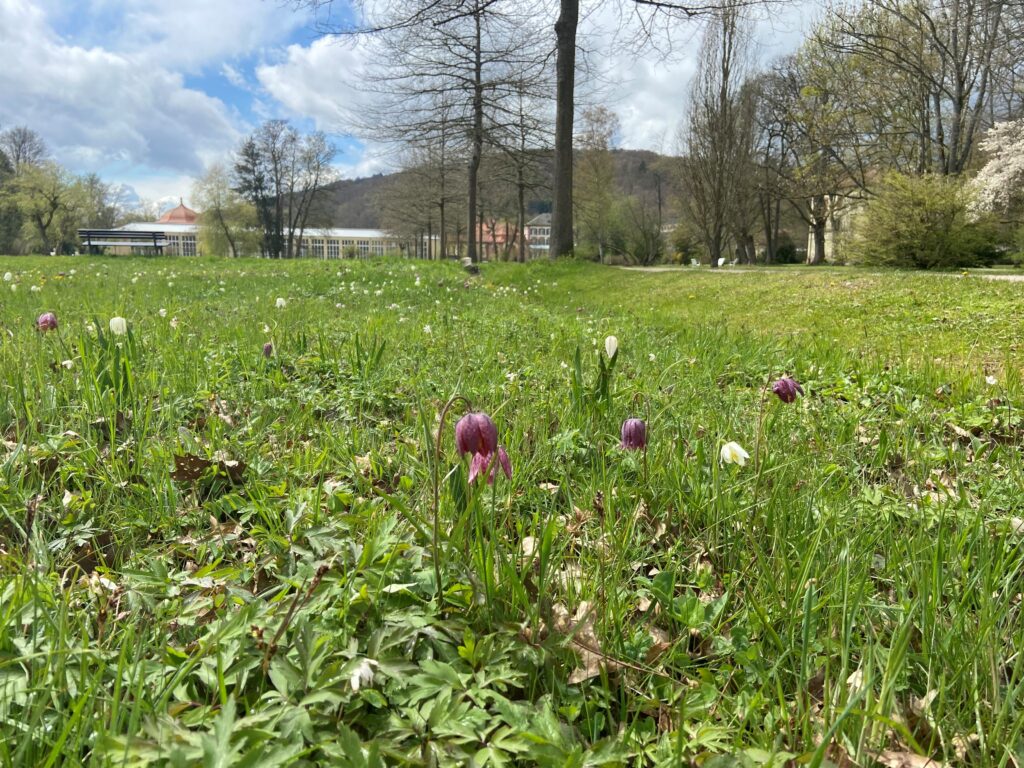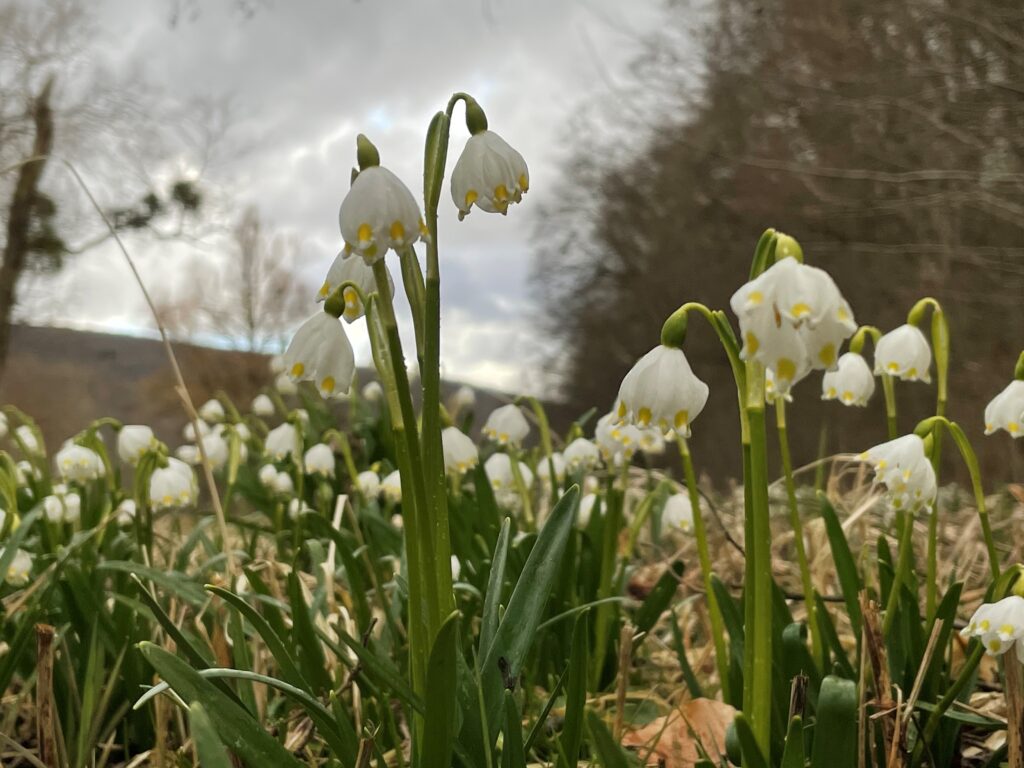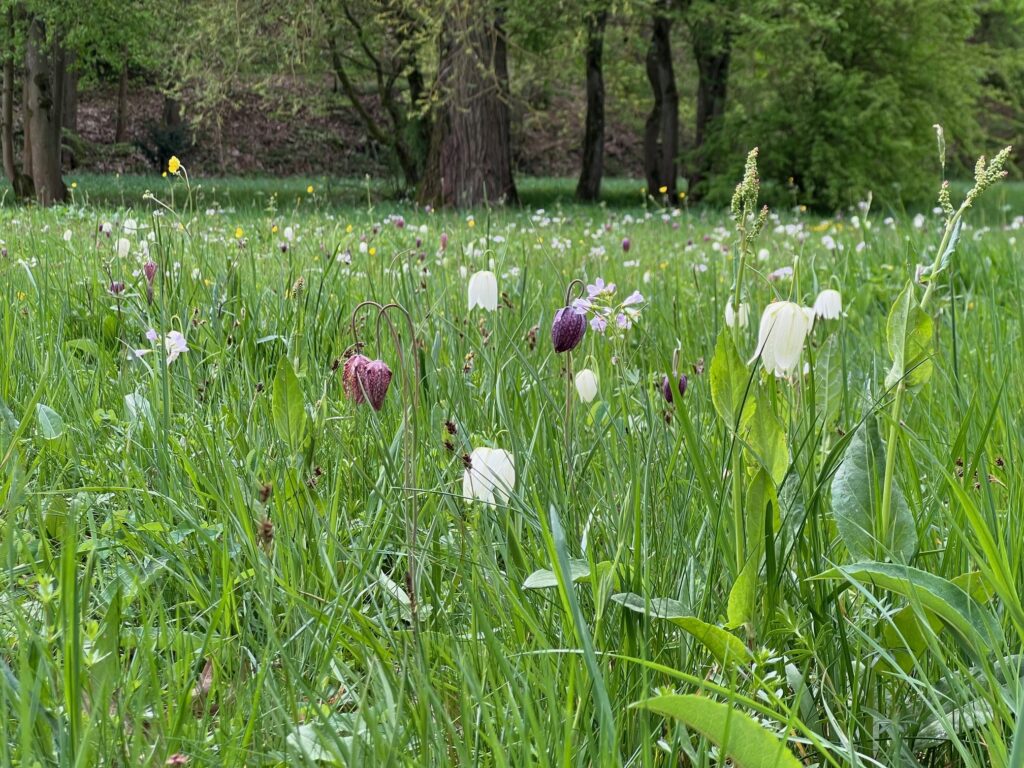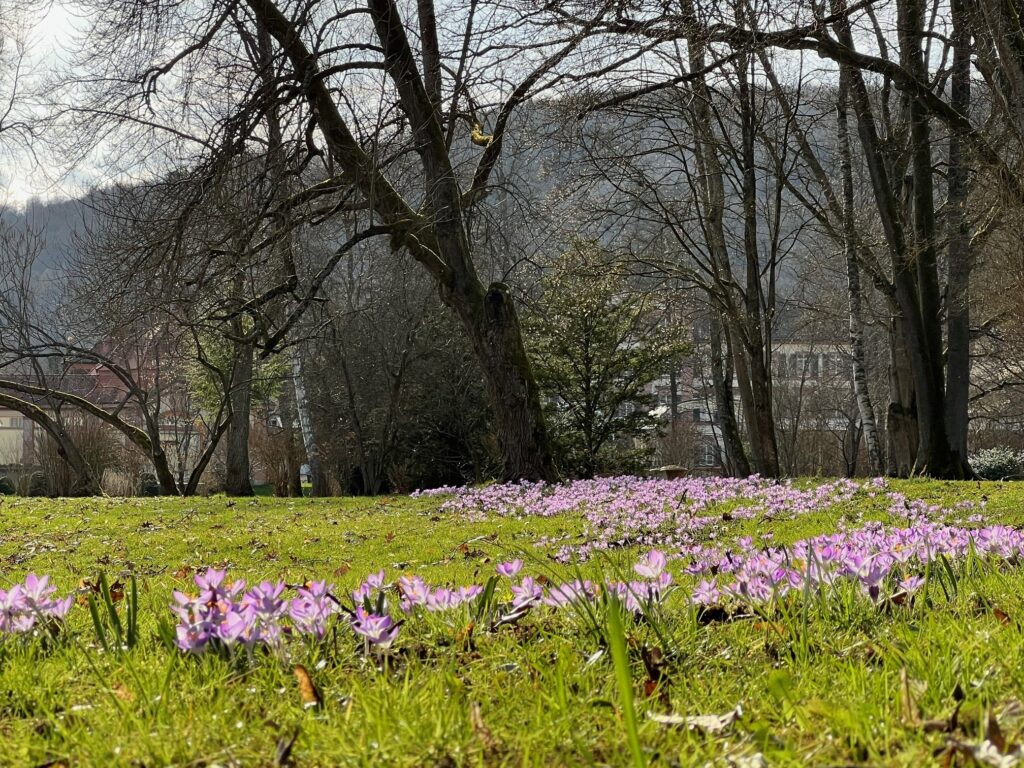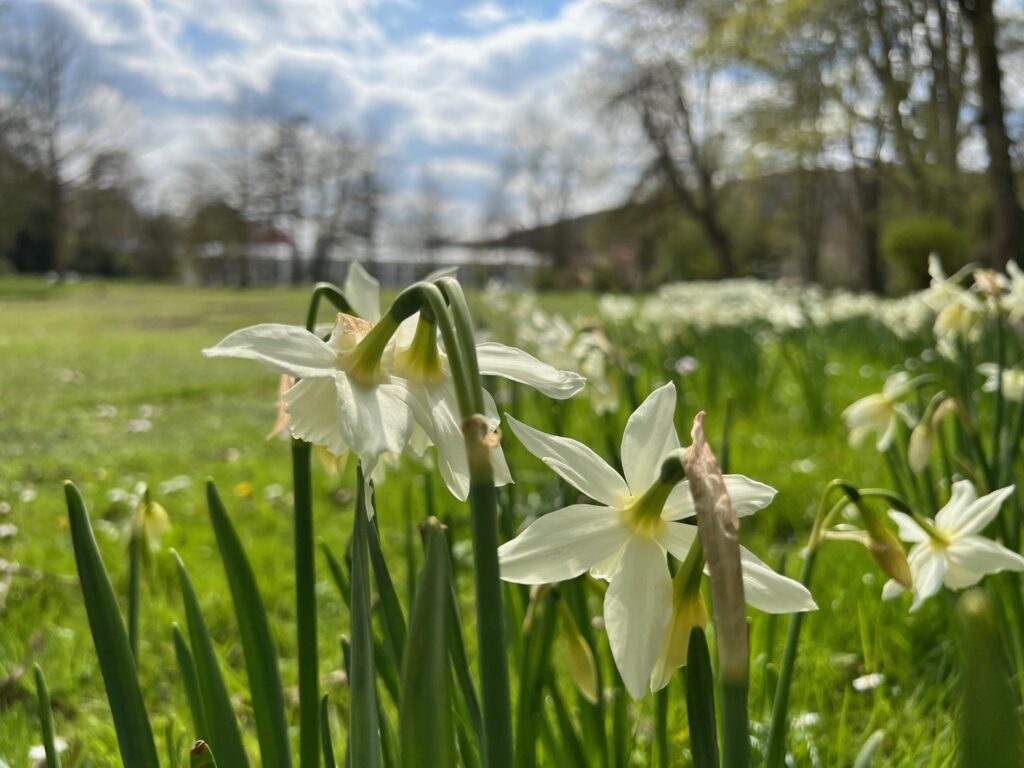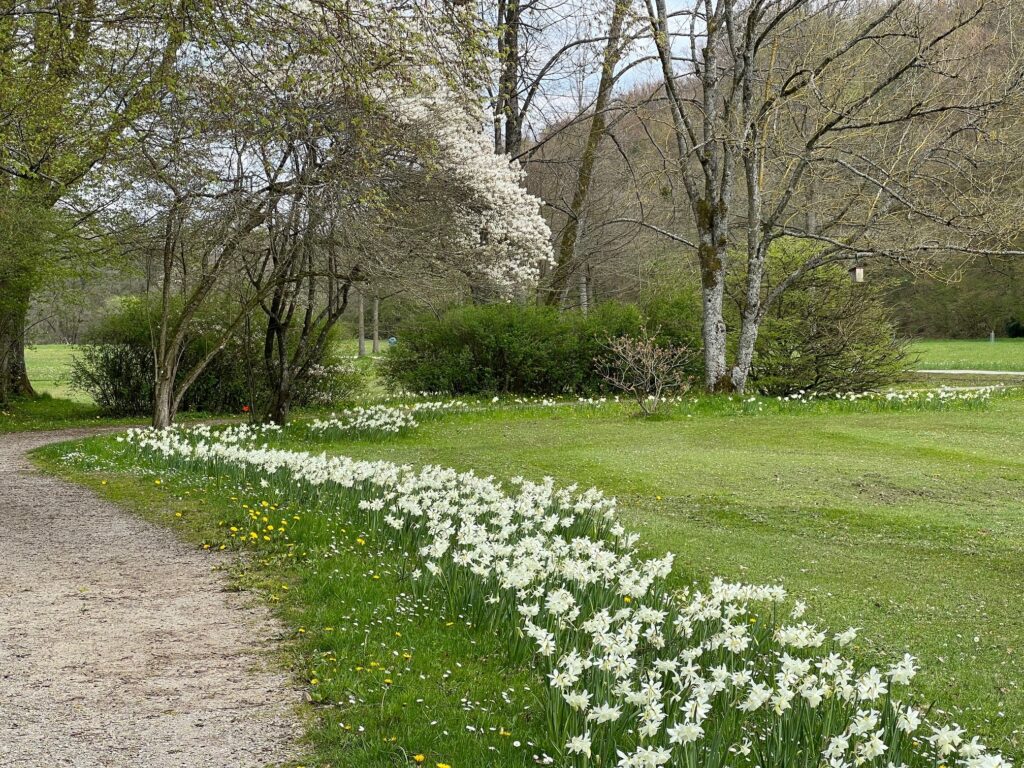Meadows
The meadows are among the most important elements in the landscape park. We attach great importance to the special nature and biodiversity of our meadows. Due to the different locations, the meadows can be divided into different areas. The landscape park contains wet and poor meadows, which are home to countless wildflowers and insects. On the southern slopes in the Staatsbad there are semi-dry lawns, where competitive grasses and wildflowers such as yarrow (Achillea millefolium), meadow knapweed (Centaurea jacea) and meadow sage (Salvia pratensis) thrive, which thrive on intense sunlight and drier soils get along well. With an area of approximately 3 hectares, the nutrient-poor wet meadows compete with many special wild species. For example, particularly beautiful plant species such as checkerboard flowers (Fritillaria meleagris), meadowsweet (Filipendulina ulmaria), large meadow button (Sanguisorba officinalis), orchids such as the orchid, (purple loosestrife (Lythrum salicaria) and brook pinkwort (Geum rivale). Our poor meadows have one Area of approx. 7 hectares and will be in July after the Main flowering and mown a second time in September. The mowing serves as fodder for regional farmers. Our meadows are rich in wildflowers, so that the carpet of flowers usually lasts until October Floods are absorbed by the wet meadows in the landscape park like a sponge and many plant species, such as the checkerboard flower (Fritillari meleagris), benefit from short-term flooding There are 15 hectares of meadow areas in the state pool that require medium maintenance.



